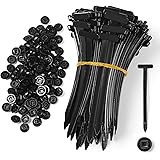Unlocking the Sky: Why Alaska Airlines’ Bold Bet on Boeing’s Largest Dreamliner Could Redefine Air Travel Forever
When Alaska Airlines decided to swap some of its Boeing 787-9 Dreamliners for the larger 787-10 model, it wasn’t just about adding a few extra seats — it was a clear signal that this Seattle-based airline is gearing up to stretch its wings far beyond familiar shores. The timing is fascinating: less than four months after dipping its toes into international long-haul waters with Hawaiian Airlines’ Tokyo flights, Alaska is making a bold bet on bigger, more capacious aircraft to fuel an ambitious expansion from its Pacific Northwest hub. But here’s the kicker — does Alaska really need the roomier 787-10s now, in such a competitive market, or is this a shrewd play to capture an entirely new set of travelers who’ve long looked elsewhere? With 13 Dreamliners on order and more routes to London, Iceland, and beyond, the real question is, how far can Alaska fly from Seattle before it outgrows the runway? Intrigued? Dive into the details and see what’s powering this ambitious ascent. LEARN MORE
Alaska Airlines sees more runway in its international long-haul expansion with the confirmation of a deal for the largest Boeing 787 Dreamliner.
The Seattle-based carrier has converted “some” of its 787-9 backlog to the larger -10, an Alaska spokesperson confirmed. Additional details on the “number and timing of deliveries” will be released soon.
Alaska has commitments for 13 787s, including five options added to the order book in the second quarter, its fleet plan at the end of June showed. The carrier’s Hawaiian Airlines subsidiary already flies four 787-9s.
Long-haul ambition: Alaska Airlines adds London and Iceland routes, unveils new Dreamliner livery
Alaska and Hawaiian merged in September 2024.
The decision to convert some of its 787-9 orders to the larger model comes less than four months after Alaska entered the international long-haul business. Hawaiian, as part of the Alaska Air Group, launched flights from Seattle-Tacoma International Airport (SEA) to Narita International Airport (NRT) near Tokyo in May. And Alaska has announced four more long-haul routes from SEA:
Alaska plans for around 12 long-haul international routes from SEA by 2030. The airline will base all of its 787s at the Pacific Northwest airport going forward, with Hawaiian’s Airbus A330s based at Honolulu’s Daniel K. Inouye International Airport (HNL).
Why the largest Dreamliner?
The case for Boeing’s largest Dreamliner is simple: more seats. The 787-10 can fly 336 passengers in a standard two-class layout — 40 more than on the -9, according to Boeing. And, thanks to comparable economics, the -10 is understood to have lower per passenger operating costs to its smaller sibling.

Daily Newsletter
Reward your inbox with the TPG Daily newsletter
Join over 700,000 readers for breaking news, in-depth guides and exclusive deals from TPG’s experts
By signing up, you will receive newsletters and promotional content and agree to our Terms of Use and acknowledge the data practices in our Privacy Policy. You may unsubscribe at any time.
The trade off? The 787-10 can only fly 7,284 miles, or roughly 1,400 miles fewer than the -9.
KLM Royal Dutch Airlines, Singapore Airlines and United Airlines are among the current operators of the 787-10.
‘Not trying to hoodwink anybody’: Alaska Airlines’ valuable points — and award chart — survive Atmos Rewards
One senior airline executive once described the 787-10 as an ideal plane for busy routes where the longer range of the -9 is not necessary.
Much of Asia and Europe are within the range of the largest Dreamliner from Alaska’s main hub. Hong Kong, London, Paris, Seoul and Tokyo, for example, are all less than 7,000 miles from SEA thanks to polar routings.
In other words, if travel demand warrants, most intercontinental destinations Alaska would likely want to serve from SEA are doable with the 787-10. And for those further afield, there is always the smaller, longer-range -9.
Does Alaska need the extra seats?
Whether Alaska needs the larger widebody plane now, at this early stage of its intercontinental growth, is unclear. SEA is a large, but very competitive, international gateway with long-haul markets that support some of the largest aircraft.
British Airways, EVA Air and Korean Air serve SEA with the largest Dreamliner, and British Airways, Emirates and Qatar Airways serve the airport with the large Boeing 777-300ER, schedule data from aviation analytics firm Cirium shows.
Delta Air Lines, SEA’s largest international carrier and a fierce Alaska Airlines competitor, flies a combination of Airbus A330-900s and A350-900s — the latter being its largest plane — from the airport.
Read more: Alaska Airlines is sticking with Bilt — but don’t expect more Atmos transfer partners anytime soon
While the market can clearly support large aircraft, Alaska is a newbie to long-haul flying, whereas its competitors are all well established intercontinental names in their respective markets. Much will depend on Alaska’s ability to serve the local SEA market and feed its new international flights with connecting passengers, both from its own flights in the U.S. and those of its partners abroad.
“SEA is better positioned geographically to connect numerous central and western cities with Asia than either SFO or LAX,” wrote Tom Fitzgerald, the aviation analyst at TD Cowen, in a December report on Alaska’s global ambitions. “The addition of long-haul international service also should improve [Alaska’s] value prop with corporate and leisure [travelers] alike.”
Alaska is a member of the Oneworld alliance, with partners that include British Airways, Japan Airlines and Qatar Airways.
Then there is the question of what Alaska does with its 787-10s during the winter, when travel demand between the U.S. and both Asia and Europe slows. Australia and New Zealand, two markets where travel peaks during the northern winter, are beyond the range of the largest Dreamliner from SEA.
Alaska could, of course, route the planes through its HNL hub to Australia if needed — but that would defeat the purpose of concentrating the 787s at SEA and A330s at HNL.
Related reading:




















Post Comment